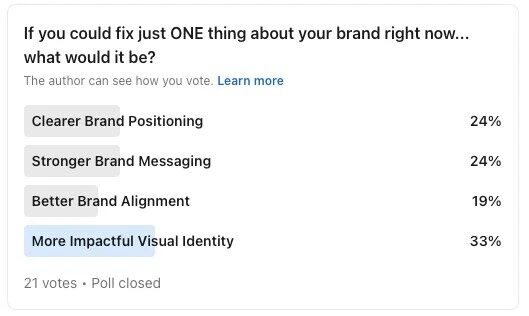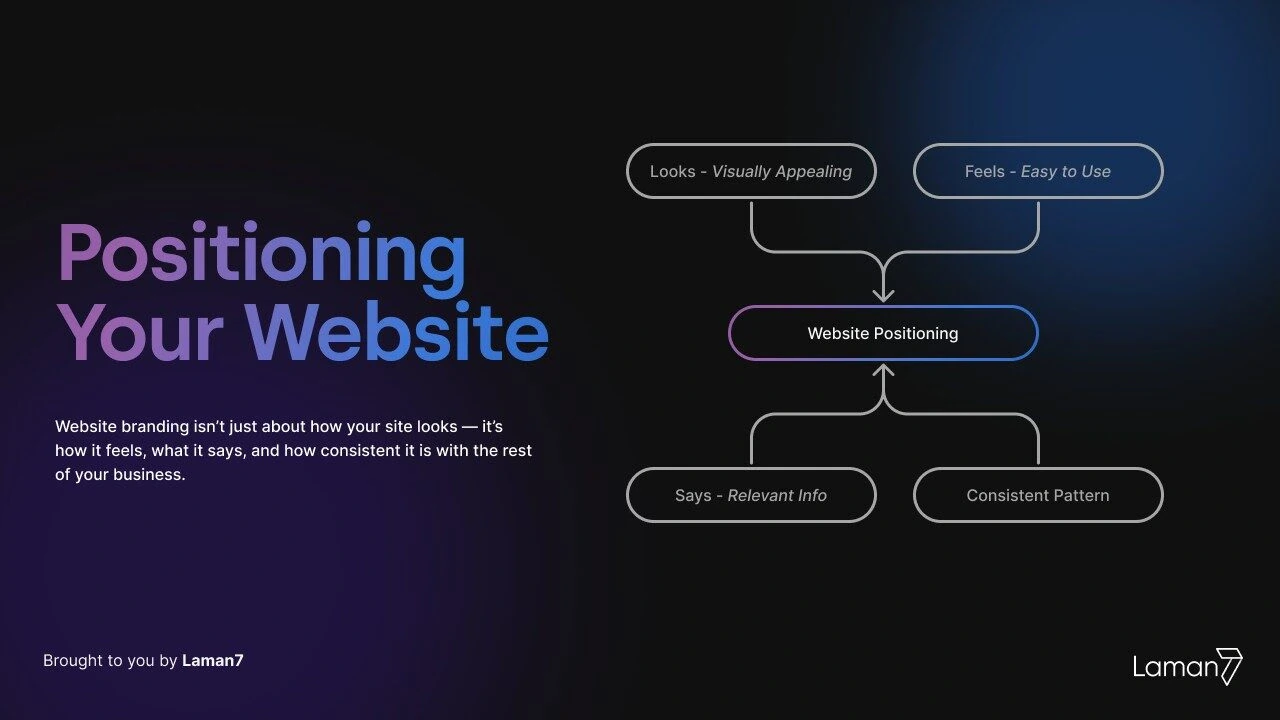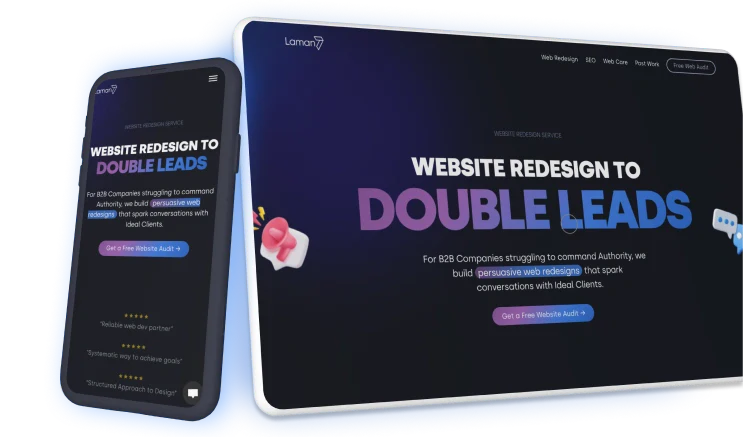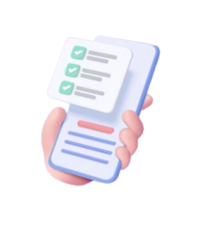Based on a recent LinkedIn poll, many brands are chasing after “scroll-stopping” visuals as if they were the holy grail of marketing. In this post, we’ll talk about website branding.

We get it — flashy gets clicks. But if you’ve read Purple Cow by Seth Godin, you know better: brands win markets by being remarkable, not by dressing average ideas in fancy design. Gimmicks don’t build trust. Strategy does.

Here’s a little backstory: we’ve redesigned over 100 websites. And you know what we’ve seen?
You can have the sexiest, smoothest, award-winning design — but if your product doesn’t sell, your team isn’t aligned, and your message is a mess, it won’t move the needle.
You can’t slap a pretty interface on a broken brand and expect magic. You can’t put lipstick on a pig.
Let’s cut through the fluff: when most people talk about “branding,” they jump straight to logos, fonts, and colours — the visual identity. According to a recent poll we ran (see above), 33% of respondents said they’d fix their visual identity first if they could fix just one thing about their brand. That’s the highest pick, even beating brand messaging and positioning.
But here’s the truth: visual identity is the last thing you should fix. Not because it’s unimportant — but because without the foundation, it’s just lipstick on a website.
If you care about website branding (and you should), you need to start with the brand engine under the hood. Let’s break this down.
What Is Website Branding Really About?
Website branding isn’t just about how your site looks — it’s how it feels, what it says, and how consistent it is with the rest of your business.

Good branding:
- Attracts the right people
- Builds trust fast
- Makes you memorable
- Communicates your value before you say a word
And a good website is where that branding gets executed and experienced.
To get your branding right, you need to understand the 4 critical elements
- Brand Alignment
- Brand Positioning
- Brand Messaging
- Brand Visuals
1. Brand Alignment (Make the Inside Match the Outside)
Let’s start where few do — internally. If your team isn’t rowing in the same direction, you’ll never reach the destination. Misalignment kills brands quietly: your dev team wants one thing, your marketing team says another, and leadership is chasing something else entirely. Result? A website that says everything and means nothing.
Brand alignment is about walking the talk — across the board.
When your internal reality (culture, product, service) doesn’t match your external promises (website, ads, emails), you lose trust fast.
Alignment means:
- Your team understands and lives the brand promise
- Your offers reflect what your market actually wants
- Your site accurately reflects your product, process, and value
If your website is making promises the business can’t keep — you’ve got a brand integrity problem.
In our years of Website Redesign, we realised the problematic projects are the ones where the top management couldn’t decide on the product (and services) and why the company exists.
Recommended read:
2. Brand Positioning (How You’re Perceived)
Next, let’s talk about owning your space. Most brands sound like clones of each other. Want to be the best-kept secret forever? Keep blending in.
Brand positioning is your unfair advantage in the market.
It answers: “Why should someone choose you over the competition?”
Strong positioning:
- Makes your offer unmistakable
- Attracts the right kind of customer
- Sets expectations clearly
If your website doesn’t tell people who you’re for, what makes you special, and why they should care — you’re invisible.
It’s Just Not Selling

3. Brand Messaging (What You Say and How You Say It)
Even the best product needs a translator. If you can’t articulate your value, no one will wait around to decode it.
Messaging is your brand’s voice.
It shows up in:
- Headlines
- CTAs
- Product copy
- Even your 404 page
Great messaging sounds like:
- A confident human, not a corporate buzzword machine
- A clear solution to a real pain point
- A promise worth remembering
If your website sounds like it was written by committee — rewrite it until it feels personal.
For best outcome, download our ebook “How to Write Homepage” or read the long short post for How to Write Homepage for B2B Products
4. Brand Visuals (How It Looks)
Here’s the part people obsess over. Fonts, gradients, animations, icons. Sure, visuals matter — they create that first impression. But if that impression promises luxury and your product delivers mediocrity? You’ve just set yourself up for disappointment.
When it comes to website branding,…
Design follows clarity.
Strong visual identity:
- Reinforces your brand’s personality
- Makes your site usable and appealing
- Helps you stand out (once your message is already doing the heavy lifting)
But visuals alone don’t convert. Ever. They enhance, not replace, the real brand work.
Design follows strategy. Form follows function (as architect would put it).
Design follows strategy. If you design first and think later, you’ll end up rebranding every year.
Don’t start with “make it pop.” Start with “what should this brand say, and how should it feel?”
Only then should you pick the colors, typography, layout, imagery, etc.
So, How Does Your Website Fit Into All This?
Your website isn’t just a digital business card. It’s the front door to your brand — and customers are judging the interior before they even step inside. If your branding isn’t tight, your site will reek of amateur hour.
Your website is the central hub of your brand.
It’s where people:
- Validate if you’re legit
- Learn what you do
- Decide if they want to buy or contact you
If your positioning is fuzzy, your messaging is weak, your visuals are disconnected, and your tone is inconsistent — your website will confuse more than convert.
But when all elements align?
- Your message lands instantly
- Your brand feels cohesive
- Your site builds trust fast — and converts better
That’s the power of website branding done right.
Final Thought: Don’t Redesign — Realign
Here’s the hard truth: most brands don’t need a new website — they need a reality check. Don’t let your design team talk you into another visual refresh when the real issue is that your brand’s story, position, and experience are all over the place.
If your first instinct is to redesign your website because “it looks outdated,” pump the brakes. Ask:
- Is my positioning clear?
- Is my messaging sharp?
- Is my site aligned with what we actually deliver?
Fix those first. Then wrap it in a strong visual identity.
Need help pulling that together?
👉 Talk to us about building a website that aligns with your brand.
We don’t just design — we dig deep into what makes your brand valuable and make sure your website reflects that, beautifully and strategically.





